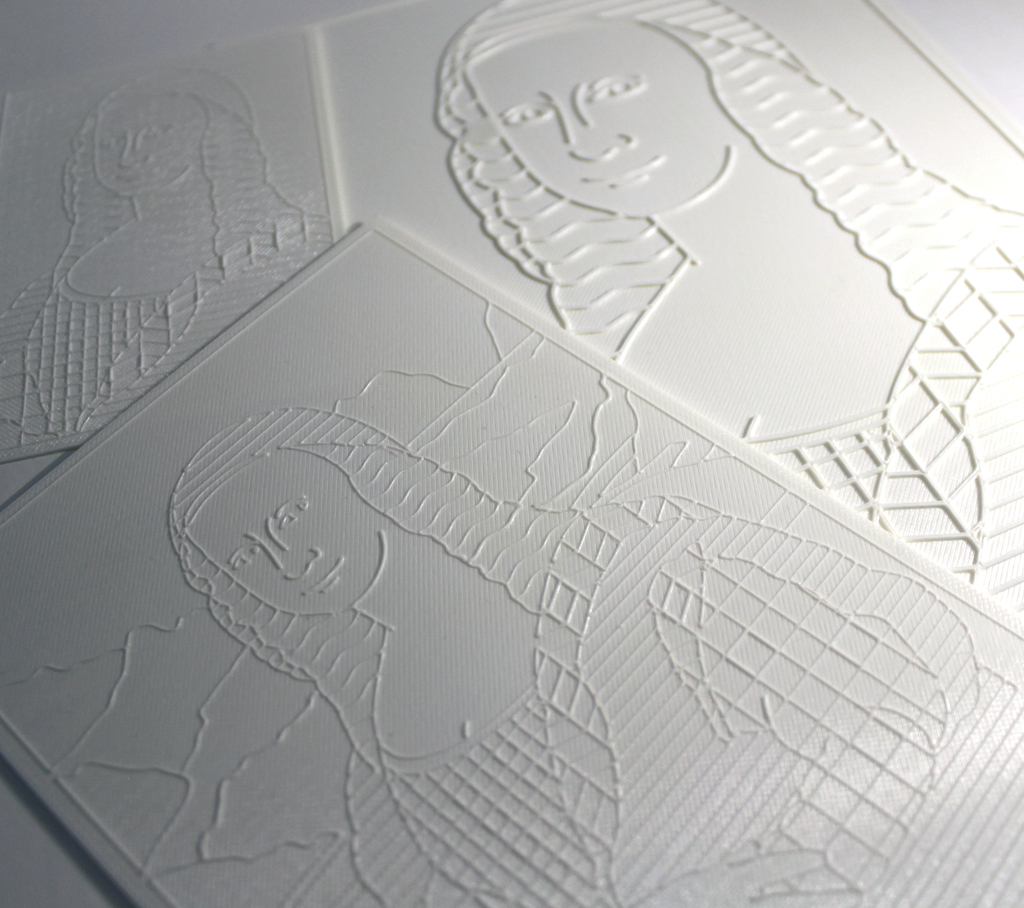
Mona Lisa Tactile Image
thingiverse
Part of a wider collection of tactile images for blind and partially sighted people, these 3D printed versions of the Mona Lisa are designed to be understood through touch. Designed to be printed at a variety of machines, the complete work is accompanied by cropped and simplified versions to allow for usable prints on small beds. In addition, a tactile version of the embroidery featured along the portraits neck and a flattened version of the repeating motif, offers access to a detail that would otherwise be omitted from similar tactile works because of size constraints. Created in partial fulfilment of the requirements of a PhD at the University of Huddersfield, the thesis includes resources and information to aid in the design and creation of tactile images from both a professional and engaged amateur audience. “The intertwining contexts of this thesis are perhaps most apparent when discussing work which spans the breadth of multiple distinct registers, that is, when mechanical concerns meet questions of emotion and experience, where access combines notions of comprehension with other forms of understanding. To wit, aside from aesthetic considerations, the Mona Lisa can be thought to open up a complex discussion in regards to what is, in effect, a functional concern of emotional codes. Indeed, any tactile depiction of the portrait must attempt to convey a complex and nuanced expression set, grappling with the idea that as a painting and not a photograph the face may not accurately depict real expression, in turn the expression itself is famously ambiguous, for whilst the Mona Lisa is thought to smile, this smile is said to disappear when observed directly. As such, in regards to our own tactile images, by reducing such a complex painting to simple lines and patterns, it could be argued that this style of translation is unsuitable or unfaithful to the original. Indeed, given the general consensus that Da Vinci left the original expression ambiguous, translating the work using tools that by design, utilise necessarily harsh striations of shape and form, could be said to remove that intended ambiguity. However, it’s important to recognise that the rationale for selecting the Mona Lisa was firmly rooted within the contexts of each of my major territories, in that any tactile translation of this image would stand as a functional depiction of a culturally significant, aesthetic work. Furthermore, there is a clear desire amongst blind communities for an analogous image that might provide some kind of aesthetic access to the Mona Lisa. Living Paintings, The Unseen Art Project, Museo del Prado and The Touch Art Festival amongst countless others, have presented tactile versions of Da Vinci’s artwork. In a territory of art creation that systemically questions and demands a clear rationale for the production of any tactile image, the ubiquity of the Mona Lisa and its status as one of most prominently reproduced sighted-artworks, is significant.” (Crumlish, 2023) https://pure.hud.ac.uk/en/studentTheses/access-to-the-aesthetic
With this file you will be able to print Mona Lisa Tactile Image with your 3D printer. Click on the button and save the file on your computer to work, edit or customize your design. You can also find more 3D designs for printers on Mona Lisa Tactile Image.
